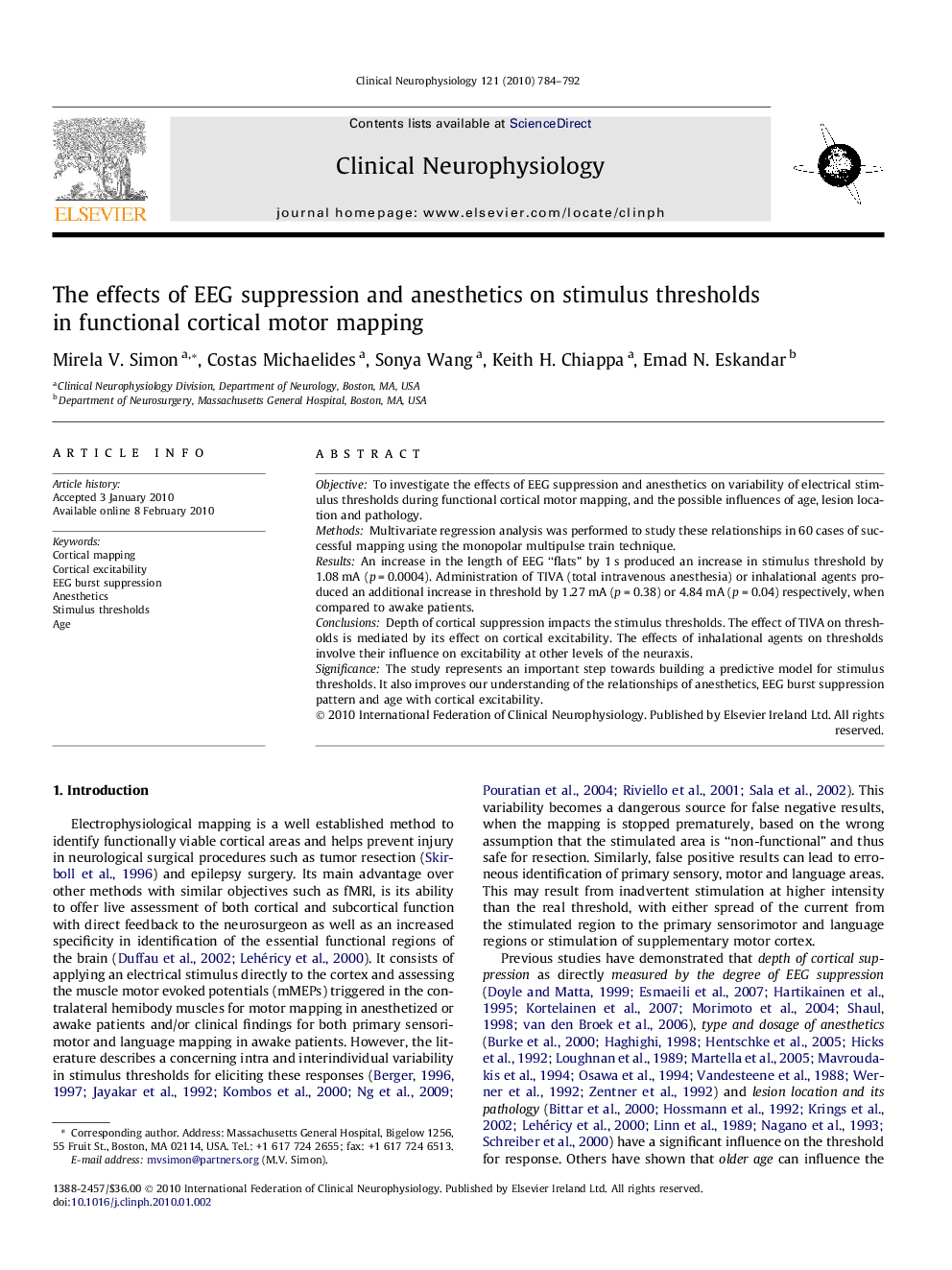| Article ID | Journal | Published Year | Pages | File Type |
|---|---|---|---|---|
| 3045762 | Clinical Neurophysiology | 2010 | 9 Pages |
ObjectiveTo investigate the effects of EEG suppression and anesthetics on variability of electrical stimulus thresholds during functional cortical motor mapping, and the possible influences of age, lesion location and pathology.MethodsMultivariate regression analysis was performed to study these relationships in 60 cases of successful mapping using the monopolar multipulse train technique.ResultsAn increase in the length of EEG “flats” by 1 s produced an increase in stimulus threshold by 1.08 mA (p = 0.0004). Administration of TIVA (total intravenous anesthesia) or inhalational agents produced an additional increase in threshold by 1.27 mA (p = 0.38) or 4.84 mA (p = 0.04) respectively, when compared to awake patients.ConclusionsDepth of cortical suppression impacts the stimulus thresholds. The effect of TIVA on thresholds is mediated by its effect on cortical excitability. The effects of inhalational agents on thresholds involve their influence on excitability at other levels of the neuraxis.SignificanceThe study represents an important step towards building a predictive model for stimulus thresholds. It also improves our understanding of the relationships of anesthetics, EEG burst suppression pattern and age with cortical excitability.
